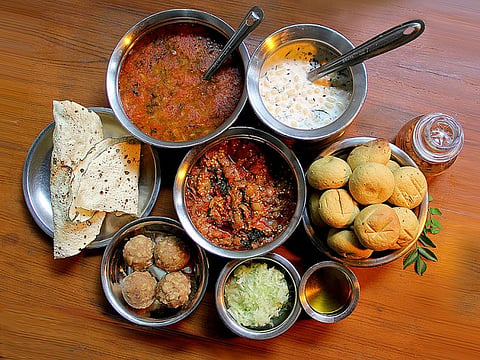
Banswara, Rajasthan- In a breakthrough study conducted by the Department of Geography at Maharaja Sayajirao University, Baroda, Banswara, a district in Rajasthan, has emerged as a gem in the making for the tourism industry. The study, led by the promising researcher Viranch Dave, has uncovered a new thematic approach to tourism that could potentially elevate Banswara to international acclaim.
The research, backed by the Indian Council of Social Science Research (ICSSR), delves into the extensive and diverse tourism landscape of Banswara. ICSSR is an institution of the Ministry of Education, Government of India which oversees social science research in the country. Through the utilization of Geographic Information System (GIS) technology, the team has identified a myriad of cultural, religious, historical, and natural attractions that can cater to various tourist preferences.
The findings of this study reveal that Banswara district has various cultural, religious, historical and nature-based sites that can attract different types of tourists. The researchers created maps using GIS to show the major tourist attractions of Banswara and its accessibility component. This study may help in encouraging research on Banswara tourism in future. Prof. Mudit Mankad and Prof. Ami Rawal of MS University have cooperated in the study. The research work of the university has been published in the famous international publication 'Journal of Tourism Insights' and it is also available online, hence anyone can read this research work for free.
As per the study, the percentage change in tourist footfall calculated from the base year 2010 shows that from 2015 to 2019, the total number of tourists arriving in Banswara District increased significantly. The COVID-19 pandemic affected the total tourist footfall, but the forecasting analysis clearly shows significant prospects in the coming years.
Rajasthan Tourism and the Banswara District administration have played a pivotal role in organizing events such as Arthuna-Mahi Mahotsav, the Ghotia Amba tribal fair, the Beneshwar fair, and so on, which have helped not only attract tourists to Banswara District but also showcase various tourism attractions ranging from natural to cultural, among others.
The Bhils, form India’s second largest tribal community, and considered as bowman of Gujarat, Madhya Pradesh, Rajasthan and Maharashtra. Archaeological studies say that they are offshoots of Eklavya of Mahabharata or Valmiki- the creator and narrator of Ramayana. Studies also reveal that Bhils were recruited by Rajputs as the Sikharis or hunters for their complete information of the land and familiarity of the terrain.
The Bhils are experts in art and sculpture. Travelers can easily procure clay horses, elephants tigers and idols, sculpted by Bhil people. These artworks are sold at exorbitant prices in shops and emporiums.
The cultural essence and grandeur of the Bhil Tribal Community find their vibrant expression through the celebratory fairs and festivals that grace Banswara annually. Among these, the illustrious Beneshwar Fair takes center stage, an event occurring every January/February on the Sakar Khaiya river island, nestled at the convergence point of the Mahi, Jhakham, and Som rivers. This significant fair, jointly orchestrated by the Banswara and Dungarpur District administrations, is renowned as the world's largest tribal fair.
Furthermore, the Ghotia Amba Fair, held in March near Borigama village, stands as another testament to the rich cultural tapestry of the Bhil community. Alongside these prominent events, several other festivals, including the Mangarh fair, the Dusshera fair, and more, play pivotal roles in not only upholding cultural traditions but also in significantly drawing attention from tourists, contributing to Banswara's cultural and tourism landscape. These diverse events collectively fall under the category of 'Fairs and Festivals', offering visitors an immersive experience into the vibrant and rich heritage of the Bhil Tribal Community in Banswara.
Based on the existing road network of Banswara district the study has designed two important tourist circuits namely Mahi River Circuit and Religious Historical Circuit. The Mahi River Circuit includes beautiful natural sites created by the Mahi River while the Religious Historical Circuit includes sites showcasing the cultural glory of Banswara district. Kadelia Waterfall, Chacha Kota, Mahidem, Jagmeru Hill and Kagdi are included in the Mahi River Circuit, while Talwara, Tripura Sundari, Ramkund, Bhimkund, Parahera, Arthuna, Mangadh, Nandani, Brahma and the city's temples are included in the religious-historical circuit. Key positions have been taken.
There are natural attractions as the Mahi River and its tributaries flow through the Banswara District, and being in the upper catchment of the Mahi River, there are many landforms like waterfalls, rapids, river islands, and so on. Over the last few years, many tourism stakeholders from Banswara District have been constantly involved in exploring and bringing forth such natural attractions as Jua Fall, Jholla Fall, Singhpura Fall, Chachakota river islands, Jagmeru hills and valleys, and so on. These are all classified as ‘Scenic Beauty’.
This study reveals that Banswara District is not monotonous regarding its tourist attractions. It has various cultural, religious, historical, and nature-based sites that can appeal to different types of tourists. Further studies can explore the potential of the local cuisines of Banswara District in attracting tourism because of the influence of the adjoining Malwa culture and also the Mewar culture on the indigenous cuisines of Vagad, which gives them a unique blend and makes them more varied. Thus, research on ‘gastronomy’ can open up more possibilities for generating culinary tourism in Banswara district. It can be said that tourism in Banswara is still in its incipient stage.
Also Read-
You can also join our WhatsApp group to get premium and selected news of The Mooknayak on WhatsApp. Click here to join the WhatsApp group.